- Home
- Steven Pressfield
Killing Rommel Page 2
Killing Rommel Read online
Page 2
At the time of the British retreat to Alamein in summer ’42, the LRDG had been in business for almost two years. Its raids had destroyed and damaged hundreds of Axis aircraft and caused thousands of German and Italian troops to be pulled out of the front lines and redeployed to provide rear-area security. The formation had acquired a certain swashbuckling glamour. Volunteers queued by the hundreds. Getting in was no cinch, however. From one batch of seven hundred applicants, the LRDG took only twelve. Criteria for selection were less wild and woolly than one might imagine. The group was not seeking buccaneers or assassins; what its officers wanted was the solid, mature sort—the type of chap who could think for himself under pressure, work in close quarters with others, and handle extremes not only of danger but of tedium, hardship and privation. The virtues of resourcefulness, self-composure, patience, hardiness, not to mention a sense of humour, were prized as highly as those of bravery, aggressiveness, and raw martial rigour.
In this I believe the LRDG was spot on. One of the factors that has kept me until now from writing of my own combat experiences is the uneasiness I have felt about the genre of war literature. Tales of heroes, the nobility of sacrifice and so forth have always made me uneasy. They run counter to my experience. From what I’ve seen, the operations of war are constituted less of glorious attacks and valiant defences and more of an ongoing succession of mundane and often excruciating balls-ups. The patrol of which I write, typical of so many, achieved little heroic beyond its own survival, save at the very end, and then less by military or tactical brilliance than by luck and its protagonists’ stubborn, even mulish, refusal to quit. Those actions of its men that may legitimately claim the name of gallantry came about largely from attempts at self-extrication from peril, most of which we got ourselves into by our own overzealousness, and the main of which were performed either in the heat of instinct or the frenzy of blood terror. The men who performed these heroics often could not recall them in the aftermath.
Let me say this about courage under fire. In my experience, valour in action counts for far less than simply performing one’s commonplace task without cocking it up. This is by no means as simple as it sounds. In many ways, it’s the most difficult thing in the world. Certainly for every glorious death memorialised in despatches, one could count twenty others that were the product of fatigue, confusion, inattention, over-or underassertion of authority, panic, timidity, hesitation, honest errors or miscalculations, mishaps and accidents, collisions, mechanical breakdowns, lost or forgotten spare parts, intelligence deficiencies, mistranslated codes, late or inadequate medical care, not to say bollocksed-up orders (or the failure to grasp and implement proper orders), misdirected fire from one’s own troops or allies, and general all-around muddling, sometimes the fault of the dead trooper himself. The role of the officer, in my experience, is nothing grander than to stand sentinel over himself and his men, towards the end of keeping them from forgetting who they are and what their objective is, how to get there, and what equipment they’re supposed to have when they arrive. Oh, and getting back. That’s the tricky part. Such success as the Long Range Desert Group enjoyed may be credited in no small measure to the superior leadership of Colonel Ralph Bagnold and Lieutenant-Colonel Guy Prendergast, its founder and follow-on OC, for whom the applications of preparation and thoroughness far surpassed those of courage and intrepidity.
Before being seconded to the Long Range Desert Group, I served, as I said, with the 22nd Armoured Brigade of the 7th Armoured Division—the famous “Desert Rats.” Our regiment was brought forward from the Delta in April and May 1942 as replacement crews during the chaos of the battles of Gazala and the Cauldron. 22nd Armoured Brigade had begun the campaign as part of 1st Armoured Division but was taken under command of 7th Armoured Division in the emergency. Her sister armoured regiments (which at that point had been reduced to composite formations) were the 3rd and 4th County of London Yeomanry and the 2nd Royal Gloucestershire Hussars. We too were a Yeomanry regiment, that is, a home formation of the Territorial Army—cavalry recently mechanised and converted to armour.
To the civilian (and to me as well, before I became familiar with them), tanks appear to be invulnerable behemoths beneath the massive bulk of their armour, their great guns, and the deafening clamour of their engines. In reality, a tank is fragile as a flower. A three-foot slit-trench can snap a track; a too-tight turn can shred the pins that link the treads. An armoured column guzzles petrol; unreplenished, it can stay in action no more than two and a half hours, less over rough going or at speed. The range of a British Matilda was seventy miles; under battle conditions, American Stuarts had to fill up every forty.
Tanks advance tethered to their B-echelon vehicles—the lorries, thin-skinners and ragtops that carry the petrol and rations, water, lubricants and ammunition without which the armoured monsters they serve become nothing but clumsy and stationary targets.
A tank depends utterly upon its supporting combat arms. Without infantry to protect its flanks and rear, to knock out anti-tank guns and to clear minefields, a tank is vulnerable to all manner of evils. Without artillery and anti-tank fire to shield it from the enemy’s armour, without aircraft to sling bombs and cannon fire at the foe advancing outside its field of vision, the tank is a plum, a bull’s-eye, a sitting duck. High-explosive shells can junk its suspension and tracks; armour-piercing rounds rip through its turret. Anti-tank guns can penetrate its armour at two thousand yards. In a tank, fighter planes and bombers are on top of you before you can hear them. You’re deaf and blind in a tank.
The commander in a Crusader or an American Grant rides directly above the gearbox and engine, whose combined din screams at such ungodly volume that an enemy shell can explode thirty feet away and you can’t even hear it. At speed over uneven ground, the tank commander bangs and lurches within the cylinder of his cupola, eyes fixed to his field glasses, ears fastened to his headset, concentrating hour after hour not only upon the flats, hummocks, ravines, wadis and dead ground of the desert on all sides of him—and of course upon the enemy manoeuvring, lurking and darting over it—but also and without let-up upon the crackling cacophony of his squadron and regimental wireless nets, over which come his orders and his relief, of which he must miss nothing, as his own life and those of his men depend on it. Then there’s the heat. Captain James Mattoon, my original squadron leader and a mechanical engineer in civilian life, calculated that an external temperature of 10 degrees Celsius (50 Fahrenheit) was ideal for a tank on the move. At 10 outside, you rode at 20 inside (70 Fahrenheit). For every degree-Fahrenheit rise outside, interior temperature rose a degree and a half. Seventy out was 100 in; 90, 120. At 100 outside—and the thermometer reached and exceeded that every summer day in the desert—you were broiling inside at 135.
Still, I loved tanks. I loved the Armoured Division. What I hated, what we all abhorred, were the vain and courage-crazy tactics which obsolete doctrine and our own undergunned and under-armoured tanks compelled us to employ. While Rommel’s Mark III and Mark IV Panzers advanced in self-covering leap-frogs, backed by crack motorised infantry and screens of lethal 88mm and 50mm anti-tank guns, our Crusaders, Grants and Honeys found themselves again and again on their own, isolated and exposed. Outranged by a thousand yards by the Mark IV’s long-barrelled 75s (and nearly as far by the Mark IIIs), our squadrons had no alternative but to dash from one spot of cover to the next, when and if such sites could be discovered, seeking either to flank the foe or to charge at him head-on, usually across open ground, in a desperate attempt to get within gun range before he or his anti-tank screens turned us into flamers or “brew-ups.” The enemy reckoned this of course and exploited it with feigned retreats, flanking manoeuvres and ambushes into which we blundered time and again.
The retreat to the Egyptian frontier in summer 1942 culminated for me in a fiasco on a sandy track alongside the Cairo–Mersa Matruh rail line. My troop of four tanks had been reduced to one Crusader and one American Grant, our squadron hav
ing lost, over the preceding twenty-one days, no fewer than nineteen others—Valentines, Honeys, A-10 and A-13 Cruisers, even a pair of captured Italian M-13s. Some had been brought up from the repair shops as replacements, others salvaged intact or refitted in the field, along with their crews, who were cycled through so quickly owing to wounds, death or capture that most barely learnt my name and I theirs before their place was taken by the next round fresh from the pool companies. On the twenty-first day I found myself separated from my squadron (who were a mile or two ahead), bottlenecked on the track west of Fuka in a hundred-mile traffic jam, still that distance short of Alexandria, with a hundred more to Cairo. My wife, Rose, was a Navy telegrapher in Alexandria; she was pregnant with our first child. I was desperate to get her evacuated before Rommel and Panzerarmee Afrika overran Egypt all the way to Suez. Suddenly I spotted a break in the column, with clear sailing ahead, cross-country, at least enough to get round the jam and rejoin my squadron. “Driver, hard right,” I commanded. Off we rumbled, steamrolling a wire barrier, directly on to a Mark IV mine.
No one was hurt, but my right track and front ventilator were blown to scratch. Under favourable conditions, the crew can re-fit a shed track by locking the steering on the unspooled side, railway-tracking spare plates beneath the spooled side, then using the power of the still-shod track to inch forward over this newly cobbled sheath, while the fitters on the ground manhandle the heavy plates into position, replace the blown ones with spares, and re-pin them. That option was out of the question in the middle of a minefield. Meanwhile the mortification grew more excruciating by the moment. Before the unstifled glee of several hundred onlooking officers and other ranks, I baled out with my crew, intending to backtrack on foot out of the minefield, where I would take over my other, still-mobile tank. The humiliation was unalleviated by the spectacle of driver, gunner and wireless operator emerging from our tank, arms laden with tins of apricots, cigarettes and Italian ham, not to mention half a dozen bottles of Boar’s Head gin, all looted on the retreat. Our regimental commander, a colonel with whom I had had a run-in several days earlier in the desert, chose that moment to appear on the shoulder of the track and, standing tall within the turret of his Grant, commanded me and my crew to return to our disabled tank and climb back aboard. He indicated a signboard poking up beside what was left of the wire. “I say, Lieutenant, can you read that posting?”
I replied that I could.
“What does it say?”
“It says minefield, sir.”
“Whose minefield?”
“Ours, sir.”
“Then what, upon Christ’s twisted Cross, are you doing in it?”
He demanded my name and outfit, though he knew both well, and instructed his adjutant by signal to write me up. I and my crew were to stay put until a squad of sappers could be called to carve us a way out.
But I have got ahead of my story. I must reverse and set down the approach march, so to speak, without which this tale will make no sense, to the reader or to me. If this were a work of fiction and I its editor, I would urge the writer to dramatise such events as hold significance for the narrative’s thesis. But I have no patience for such stuff in my own memoir, so the reader will forgive me, I hope, if I simply lay out the essentials overtly, as they were and as they felt to me.
2
I AM A product of the English public school system. I state this neither as a badge of honour nor as a blot of shame, only as a foundation in fact, from which I venture the thesis that this often nasty, brutish and peculiarly British institution, whatever its other shortcomings, must be given credit for producing a type of citizen who came into his own during the war, in the officer corps of all theatres, but specifically, in my own experience, in the Western Desert.
What is it about featureless wastes that appeals so powerfully to the Anglo-Saxon soul? William Kennedy Shaw, who served from its inception as intelligence officer of the Long Range Desert Group, relates the tale of a captured German officer transported from Kufra to Cairo by one of the LRDG’s patrols, nearly seven hundred miles in unarmoured Chevrolet trucks across such appalling wilderness that even native Senussi tribesmen rarely dared venture into it. After several days of observing the Long Range Desert Group’s Tommies and Kiwis imperturbably at their labours, the prisoner confided to his captors, “We Germans could never pull off this trick as you do, wandering about on your own, miles from nowhere. We lack the individual initiative. We prefer to run in a pack.”
What appeared as unendurable hardship to soldiers of other nationalities produced a species of exhilaration in our lads, raised on a diet of Kipling and institutional porridge. Some time after the war I ran into a school chum, a pilot, Flight Lieutenant S., who had been shot down over Holland in 1940 and had endured the better part of four years in Oflag Luft III, most notorious of the camps for Allied fliers. When I asked him to describe the experience, he replied, “A bit like St. Paul’s, only with better breakfasts.”
The English educational system for the privileged classes of that era was made up of two tiers—public school and university. When war came, a third tier was appended, the regimental, so that a young man might be identified as, say, Harrow/Sandhurst/Royal Scots Greys or Ampleforth/Cambridge/Coldstream Guards, which venues of passage cast, or reinforced, the graduate in a sliver of social hierarchy from which no earthly intervention could extract him—Old Rich, New Rich, Newly Ruined, Anciently Impoverished. My own family was Old Rich Freshly Ruined on my father’s side and Never Rich at All on my mother’s.
At Winchester when I was thirteen there were three heating stoves, two half-sized baths and one WC in a boarding house housing thirty boys. We used chamberpots at night. In winter, water froze in our drinking pitchers. Winchester boys were called “commoners.” We wore neckties in the classroom and caps and gowns on examination days. Twenty cigarettes cost a shilling with a penny back in the packet. We read in Greek Xenophon’s March of the Ten Thousand and in Latin Livy’s History of Rome, not to mention all of Chaucer, Milton and Shakespeare, and the main freight of Marlowe, Coleridge, Hardy, Arnold, Tennyson, Thackeray, Dickens and Conrad, while participating in all weathers in football, rugby, cricket, rowing, riding and track and field, as well as attending religious services, usually Anglican, not once on Sunday but five times a week.
Many boys saw their parents on holidays only; some not even then. They raised each other like feral beasts, with all the outrages and excesses that such an upbringing implies. For most, it worked. The public schools of that era produced a type of young man who was keen but not academic, athletic but not muscle-bound, gay of heart and confident of mien, a solid chap, the sort who would sooner die than let the side down. Put another way, the system turned out the kind of individual who frequently displayed boredom or feckless complacency during times of prosperity, but shone through in hours of trial. I have often wondered of comrades who fell as heroes during the war whether, in the fatal instant, they weren’t privately relieved to do so, dreading a deadly post-war normality more than the bullets and cannon shells of the foe.
When I was twelve, my mother was killed in a motor accident. I am not a subscriber to the theory of traumatic psychopathology. It is humbug in my view to isolate some episode from childhood and extrapolate from it an aberration of character, indelible for the remainder of one’s life. That said, some wounds go deep. My father, who had been driving at the time of the accident, suffered far worse than I. He could not overcome his grief and guilt. He withdrew, first from work, then from family, at last by his own hand from life itself. I have three sisters, Edna, Charlotte and Margaret Anne. After the deaths of my mother and father, our two uncles, my father’s brothers, in whose care we children were placed, thought it best that we be sent to boarding schools. My sisters were enrolled in St. Catherine’s, an Anglican academy in Herefordshire near the town of Hay-on-Wye. I was sent to Winchester.
The night of my father and mother’s accident, my sisters and I were driven to the hospita
l by our neighbours in their 1924 Humber sedan, a car I adored because it had a jump-seat in the back, which folded up from the floor. My sisters disdained this as undignified, which was a joy to me as I got it all to myself. No one had told us yet what had happened or where we were going. We could scent the wind, however, and this cast a pall over the ride. My sisters were weeping already.
At the hospital a nurse instructed us to wait in an area of wooden benches. My sisters obeyed gravely; our neighbours, an elderly couple, sat up with us. At the terminus of the hallway stood two wide, handle-less doors, through which from time to time nurses pushed trolleys. On the far side of these, our mother lay in surgery. The doctors were labouring heroically, we were told, to save her. Our father’s injuries were less severe; he was being treated in another wing.
We waited. How long would the operation take? No one could tell us. Hours seemed to pass. Our caretakers would not let me go outside so I excused myself to find the lavatory. I poked down a hallway. A passage opened on to a corridor of patients’ rooms, from which a nurse chased me. A dim space led to a kind of anteroom. I entered. In the corner sat a surgical trolley. On it was my mother’s body.
The bloody clothes from the accident had been wadded into a ball and dumped on to the trolley shelf below. My mother herself lay beneath a white surgical sheet, which had fallen partly free, exposing her nakedness from waist to neck. She lay on her side, with her right arm dangling grotesquely. Her mouth was agape; she was already going stiff. No one was about. The institutional custodians had just left her there.

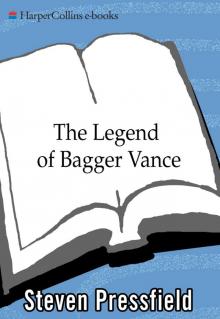 The Legend of Bagger Vance: A Novel of Golf and the Game of Life
The Legend of Bagger Vance: A Novel of Golf and the Game of Life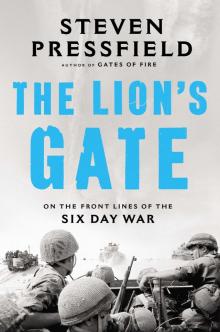 The Lion's Gate: On the Front Lines of the Six Day War
The Lion's Gate: On the Front Lines of the Six Day War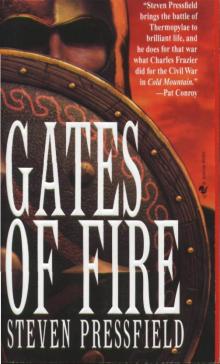 Gates of Fire
Gates of Fire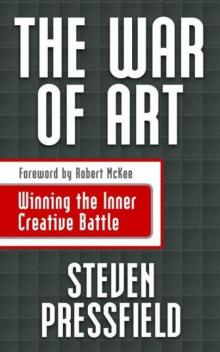 The War of Art
The War of Art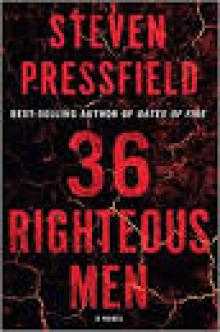 36 Righteous Men
36 Righteous Men The Virtues of War
The Virtues of War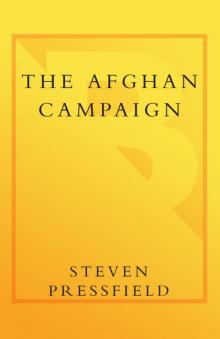 The Afghan Campaign
The Afghan Campaign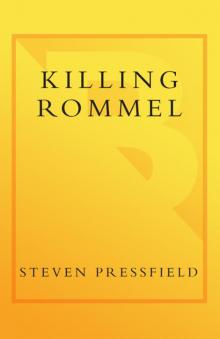 Killing Rommel
Killing Rommel Last of the Amazons Last of the Amazons Last of the Amazons
Last of the Amazons Last of the Amazons Last of the Amazons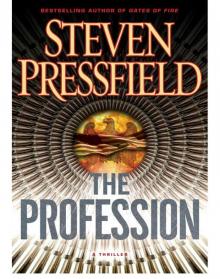 The Profession
The Profession Last of the Amazons
Last of the Amazons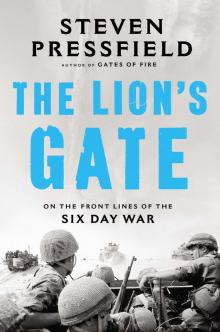 The Lion’s Gate
The Lion’s Gate The Legend of Bagger Vance
The Legend of Bagger Vance Virtues of War
Virtues of War Tides of War, a Novel of Alcibiades and the Peloponnesian War
Tides of War, a Novel of Alcibiades and the Peloponnesian War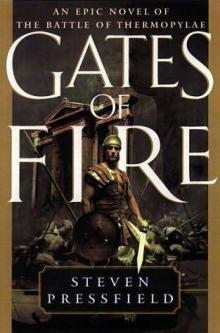 Gates of Fire: An Epic Novel of the Battle of Thermopylae
Gates of Fire: An Epic Novel of the Battle of Thermopylae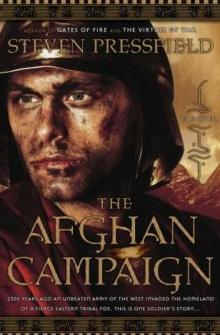 The Afgan Campaign
The Afgan Campaign